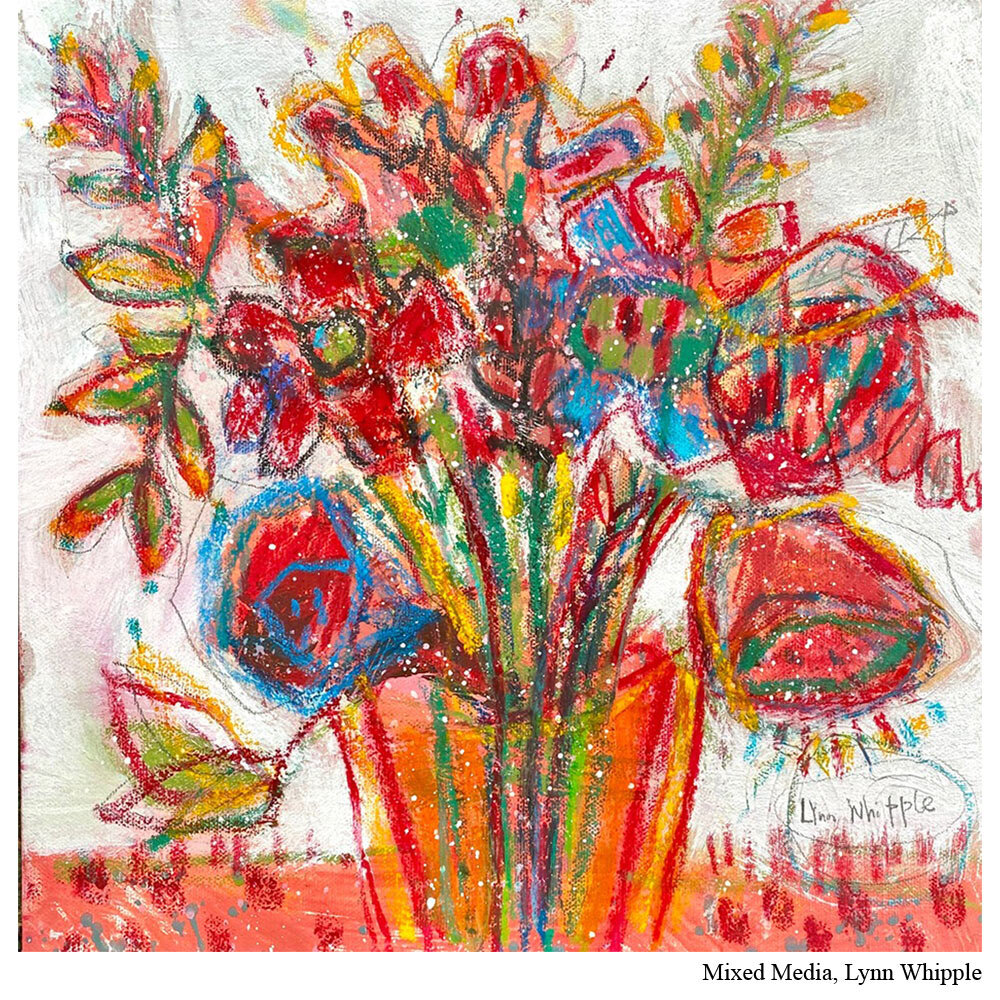20 Ideas for 20 Minute Art Sessions
The #20for20 Art Challenge begins April 1st. Join the #20for20 Class today and test drive a daily art practice. Learn more here.
20 minutes isn’t a super long time. But that doesn’t mean that you can’t make solid steps towards your art goals.
The key is to focus on one area you want to improve and then design your sessions around that.
Below are some ideas for things you could try for 20 minutes. These are all great ways to warm up or to add to your daily art practice as focused practice.
1. Color Swatch Mix:
Randomly grab a color swatch and mix it. By removing color mixing practice from the complexity of an in-progress painting, you’ll be able to really focus on learning to mix color. Cut up small pieces of Bristol or watercolor paper to make a swatch book with notes on the colors used and lesson learned.
2. Both Hands:
Get big paper and use both hands at the same time to draw your subject BIG! This will get your whole body involved and is not only a great warm up but creates interesting underlayers for painting large. (Thank you Lynn Whipple, Ep. 23).
3. Contour Drawing:
Eyes on the subject, pencil on the paper and draw. (Don’t lift your pencil until you're finished!) When you’re finished, you won’t have a pristine drawing. After all, that’s not the goal of the exercise. What you will have is somethin that looks pretty cool and you’ll have spent your entire session training your eyes to really LOOK and SEE your subjects. (Something all artists have to learn to do.)
4. Still Life Set Up:
Practice setting up still life setups. It’s its own art form and so often it’s a step we rush. But setting up a good still life will make every single step that follows much more enjoyable.
5. Thumbnails:
Turn a reference into various thumbnails to see what you like best. (Use the Starter Pack!) It’s amazing how many visual problems you can solve in a 2x3 inch space.
6. Limited Palette:
Choose single reference & each day use a different three colors for paint. By choosing a single subject, you limit your variables so that you can put all of your problem solving energy into exploring the different combinations three different colors make when working together.
7. Multi-Day Painting:
Maybe studies aren’t for you and you really want to be working towards finished paintings. Not a problem. Choose a subject and then break down your process steps into individual sessions. For example it may look like, . Day 1: sketch, Day 2: thumbnails, Day 3-5: paint.
8. Sketchbook:
Practice using a new space for idea development. Maybe it’ll become the heart of your artistic practice like Laura Horn, Ep. 32.
9. Timed Painting:
Choose limited set of materials, set a timer and go! The goal is to just keep moving. Let your intuition lead you. After you’ve worked through a few, you may begin to see your own tendencies in a new way. (Thank you Jane Davies, Ep 26.)
10. Shape Limit:
Design a value study with only 12 shapes (or 7 or 5, etc) This is great if you’re working on strengthening the composition in your paintings or have goals to create looser paintings. (Thank you Mark Mehaffey, Ep. 5.)
11. 4-Step Sketch:
Three passes: Your lights, your mids, your darks. Done. Another great one to help you get looser and to really have a plan before you begin a larger piece. (Thank you Julie Gilbert Pollard, Ep. 25.)
12. Fly Around Studies:
Set up a still life. Set a timer for 2 minutes. Your goal is 30 sketches from different angles. Go. So often as artists we choose the first scene we think of to paint. But you’ll be surprised at all the good ideas that come in sketch 5 and on. (Thank you Todd M. Casey, Ep. 24.)
13. Subject Focus:
Draw OR paint one reference (or one very specific subject) for 20 days. Image how much your skill will improve after focusing intensely on bulldogs or daffodils or log cabins for 20 days.
14. Painted Papers:
Grab deli paper and acrylic paints and make painting papers. These are great for collage and mixed media pieces.
15. Make Backgrounds:
Use your collage papers to make backgrounds for future paintings. (Thank you Sandra Duran Wilson, Ep.41.)
16. Value Studies:
Practice turning your subject into a three value study. It’s one of the top suggestions by guests on the show. Grab paint or grey pens. (The Starter Pack has a bunch of blank thumbnails for you to print out and use! Grab it by Dec. 31st!)
17. Notans:
Like a value study but in black in white. These really force you to look at the shapes and composition of your subjects.
18. Color Wheel:
Start with yellows and mix colors all around your color wheel. (Turn them into art papers!) (Thank you Mark Eanes, Ep. 11.)
19. Doodle Alphabet:
Choose a subject theme. Draw the alphabet and turn each letter into that subject. This is a great way to overcome your anxieties about drawing and to learn to find your tendencies in how you draw things. Celebrate the pieces of your style you find. (Thank you Esté MacLeod, Ep. 17.)
20. Technique Focus:
Choose a challenging technique like a wet into wet wash and spend each day practicing just that. If wet-into-wet is your nemesis, imagine how much better friends you'll be after 20 days of 20 minute sessions studying the moisture of your 140 pound paper.
20 minutes isn’t long. But if you spend that time in a focused way, you’ll be surprised at how much you can improve.
Get articles like this and new podcast episodes sent straight to your inbox by signing up for the newsletter below.






